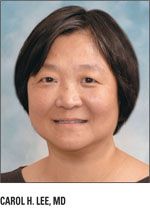Experts take umbrage with federal panel change to age for mammo screening
A U.S. Preventive Services Task Force recommendation that routine breast cancer screening should begin at age 50, and take place every two years, did not sit well with the breast cancer community. The new recommendations will result in “many needless deaths,” stated the Society of Breast Imaging and the American College of Radiology.
A U.S. Preventive Services Task Force recommendation that routine breast cancer screening should begin at age 50, and take place every two years, did not sit well with the breast cancer community. The new recommendations will result in "many needless deaths," stated the Society of Breast Imaging and the American College of Radiology.
The American Society of Breast Surgeons also weighed in, claiming that the recommendations will "effectively turn back the clock to pre-mammography days by making the diagnosis of breast cancer occur only when the tumor is large enough to be felt on a physical exam."

In addition to raising the age at which screening should start, the USPSTF lowered the age that screening should end to 74, because it said there was insufficient evidence to determine the screening benefits and harms for women age 75 or older. The recommendations are a reversal of the panel's 2002 recommendation that annual mammography screening begin at age 40 (Ann Intern Med 151:716-726, 2009).
The USPSTF's rationale for the new recommendations included psychological harm, unnecessary imaging tests and biopsies in women without cancer, and inconvenience due to false-positive screening results. USPSTF also cited overdiagnosis as well as the harms of unnecessary earlier treatment of breast cancer that would have become clinically apparent but not have shortened a woman's life.
There is only a moderate benefit for screening mammography in women aged 40 to 49, USPSTF concluded. However, the moderate benefit does not apply to women who are at an increased risk for breast cancer by virtue of a genetic mutation or chest radiation. Women at an increased risk should get screened before age 50.
For the recommendations, USPSTF researchers commissioned two studies related to breast cancer screening. The first reviewed evidence for six questions relating to the benefits and harms of screening. It was funded by the National Cancer Institute and performed by Georgetown University Medical Centers. The second was a decision analysis using population modeling techniques to compare expected health outcomes for starting and ending mammography at different ages as well as annual vs biennial screening intervals. It was funded by the U.S. Agency for Healthcare Research and Quality and performed by Oregon Health and Science University researchers.
The task force makes assumptions contrary to evidence, said a statement issued by the American College of Radiology and the Society of Breast Imaging.
"The presumption that loss of life can be minimized if high risk women opt to be screened earlier or more frequently than recommended overlooks the fact that about 75% of all breast cancers occur in women who are not at high risk," the statement said.
The task force recommendations are based on a presumption that the harms of screening, such as the anxiety associated with an abnormal result or potential for overdiagnosis, outweigh the benefit of lives saved, ACR and SBI said.
"Mammography is not a perfect test, but it has unquestionably been shown to save lives-including in women aged 40 to 49," said Carol H. Lee, MD, chair of the ACR's Breast Imaging Commission. "If Medicare and private insurers adopt these incredibly flawed USPSTF recommendations as a rationale for refusing women coverage of these life-saving exams, it could have deadly effects for American women."
Decline in breast cancer mortality
Since regular mammography screening began in 1990, the mortality rate from breast cancer, which had remained unchanged for the preceding 50 years, dropped by 30%, ACR and SBI said. The task force also did not examine the benefit of less invasive and less disfiguring therapy that can be achieved with early diagnosis through screening mammography.
"The morbidity, personal grief, and financial costs of breast cancers diagnosed in late stages are tremendous," the organizations said. "For example, treatment that might have consisted of a lumpectomy if caught early might instead require a mastectomy and chemotherapy. The USPSTF did not acknowledge, evaluate, or account for this."
It appears the USPSTF recommendations were motivated by cost because the analysis evaluates the number of lives lost under a variety of screening scenarios and then recommends the less expensive screening interval as opposed to the one that saves more lives, ACR and SBI said.
"Not only are these numbers based on the lowest estimate of benefit, but they have no meaning for the women being screened," their statement said. "Each woman has a single screening study each year regardless of the yield of cancers. Numbers only suggest the relative cost of curing a cancer by early detection and the USPSTF has, arbitrarily, decided that the cost of saving women ages 40 to 49 is too high." USPSTF also ignored relevant clinical evidence in order to justify their claims, according to ACR and SBI.
"The USPSTF based their recommendations to reduce breast cancer screening on conflicting computer models and the unsupported and discredited idea that the parameters of mammography screening change abruptly at age 50," they said. "In truth, there are no data to support this premise."
At least 40% of the lives saved by mammographic screening are of women between the ages of 40 and 49, according to W. Phil Evans, MD, president of SBI. "These recommendations are inconsistent with current science and apparently have been developed in an attempt to reduce costs," he said. "Unfortunately, many women may pay for this unsound approach with their lives."
Newsletter
Stay up to date on recent advances in the multidisciplinary approach to cancer.